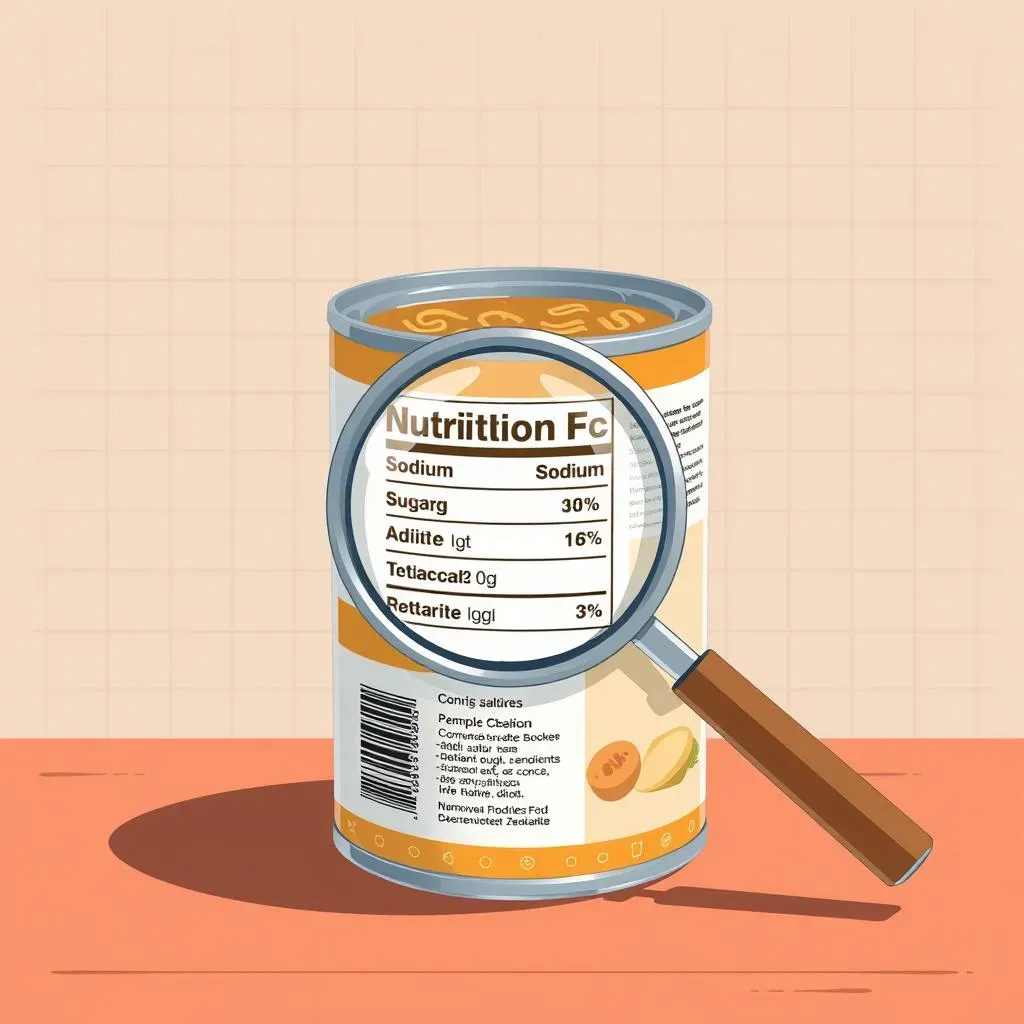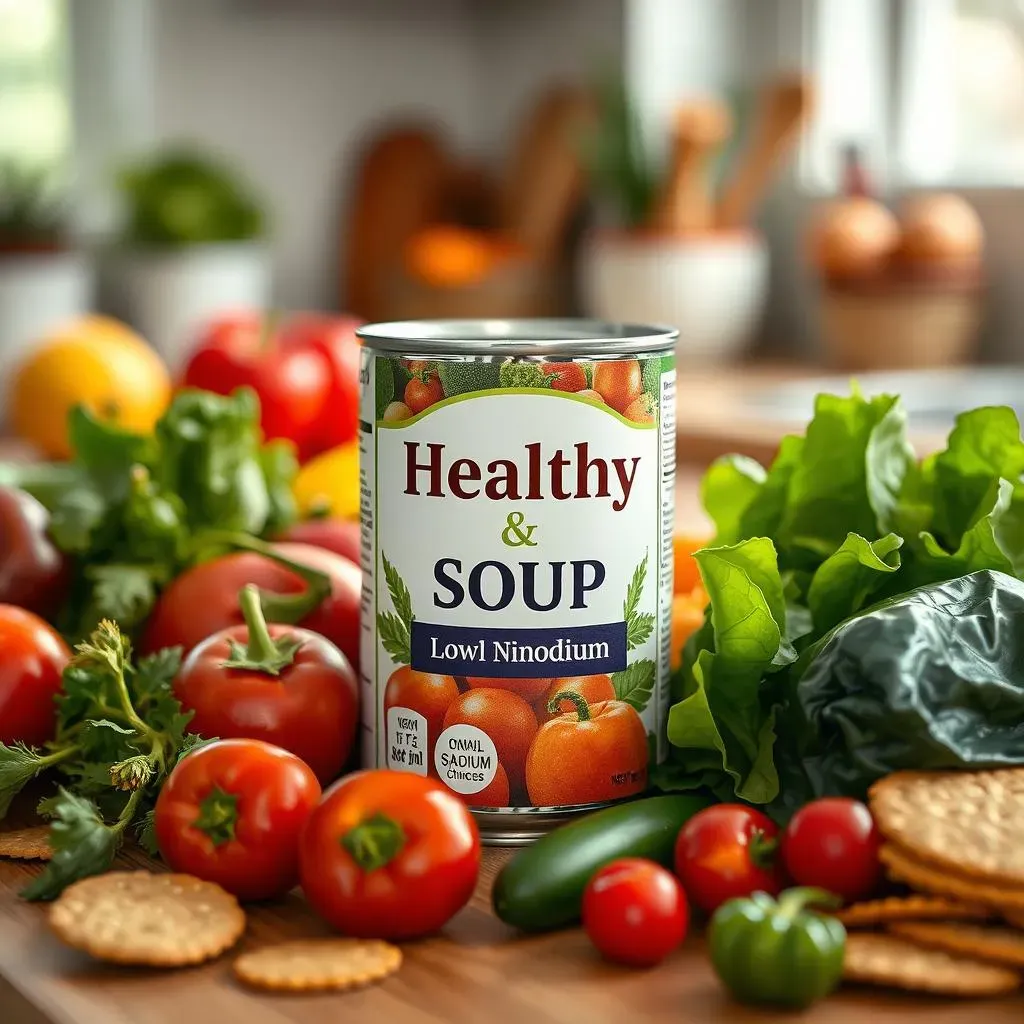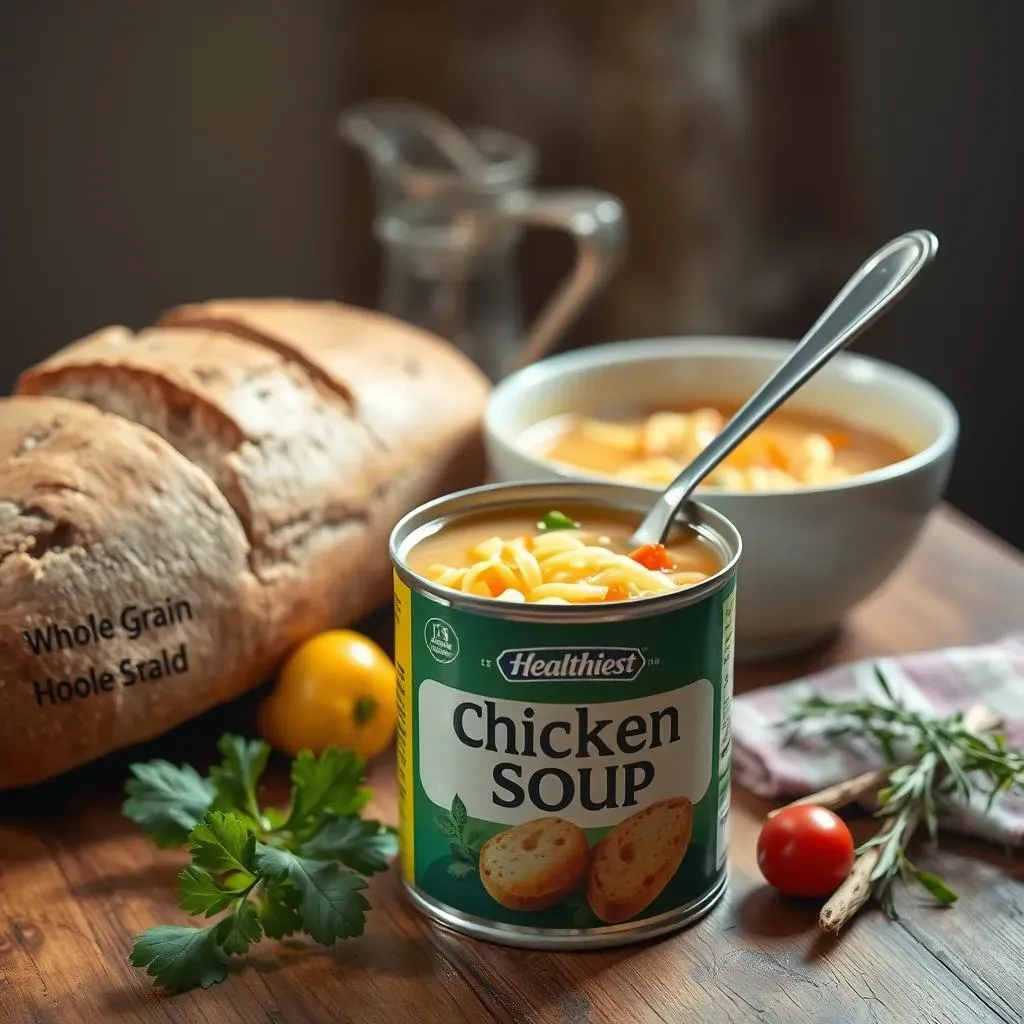Table of Contents
Let's face it: sometimes, nothing beats a warm bowl of chicken noodle soup. But when you're grabbing a can from the supermarket, finding the healthiest canned chicken noodle soup can feel like navigating a minefield of confusing labels and hidden sugars. This article cuts through the confusion, providing you with the tools and knowledge to make informed choices. We'll decode those nutrition labels, revealing the sneaky ingredients lurking in some brands. You'll learn to spot high sodium levels, excessive sugar, and other additives that can sabotage your healthy eating goals. But don't worry, we're not just pointing out the bad stuff! We'll also highlight some top picks for healthier options and offer smart swaps to help you enjoy your favorite comfort food without the guilt. By the end, you'll be a soup-savvy shopper, confident in your ability to select the healthiest canned chicken noodle soup for you and your family. Get ready to upgrade your soup game!
Navigating the Soup Aisle: Understanding Nutrition Labels

Navigating the Soup Aisle: Understanding Nutrition Labels
Decoding the Serving Size
First things first: always check the serving size. It's the foundation of everything else on the label. A "serving" might be half the can, or even less! If you eat the whole can, multiply the listed nutrients accordingly. Think of it like this: if the label says one serving has 200mg of sodium, and you eat two servings, you're getting 400mg – a significant difference!
Next, look at the calories. Are they within your daily goals? You can find more information about low-sodium soups here. Many canned soups are surprisingly high in calories, so be mindful of your portion size.
Nutrient | Importance |
|---|---|
Serving Size | Sets the baseline for all other values |
Calories | Total energy content |
Fat, Sodium, and Sugar: The Usual Suspects
Now, let's tackle the big three: fat, sodium, and sugar. Fat isn't always the enemy – some fats are healthy – but excessive saturated and trans fats are a concern. Check the percentages of daily value (%DV) to see how much fat is in each serving. Sodium is often the biggest culprit in canned soups, so look for low-sodium options or brands with lower %DV. Sugar is another hidden ingredient. Many soups contain added sugars, impacting the overall health profile.
Don't forget to check the ingredients list! This gives you a complete picture of what's in your soup, including any additives or preservatives. You might be surprised by some of the ingredients listed. For a fun comparison of different brands, check out our canned chicken noodle soup taste test here.
- Fat: Look for lower saturated and trans fats
- Sodium: Aim for low-sodium options
- Sugar: Minimize added sugars
Beyond the Basics: Vitamins, Minerals, and Protein
Once you've got a handle on the basics, you can explore other nutritional aspects. Look for soups that are good sources of protein, vitamins, and minerals. Chicken noodle soup often provides a decent amount of protein, which is important for building and repairing tissues. Some brands might also be fortified with extra vitamins and minerals, boosting their nutritional profile. Remember, a balanced diet is key, and your soup is just one piece of the puzzle!
Finally, consider organic options! Organic canned chicken noodle soup often contains fewer pesticides and other potentially harmful chemicals. Learn more about organic options here. It might cost a little more, but many believe it's worth it for the peace of mind. This is just a starting point; using this knowledge will make you a more informed consumer.
Sodium, Sugar, and Sneaky Additives: What to Watch Out For

Sodium, Sugar, and Sneaky Additives: What to Watch Out For
The Sodium Shock: Hidden Salt in Your Soup
Let's talk sodium. It's the silent saboteur of many canned soups. High sodium intake can lead to high blood pressure and other health problems. Manufacturers often add extra salt to enhance flavor, but it's not always necessary. Look at the %DV for sodium; ideally, aim for 5% or less per serving. Remember, you're likely eating more than one serving, so that 5% adds up quickly! A lot of brands hide sodium in their ingredients list, so always read carefully.
Many people underestimate how much sodium they consume daily. It's not just about salt shakers; it's about the hidden sodium in processed foods. For a deeper dive into low-sodium options, check out our guide to low-sodium canned chicken noodle soups here. Choosing wisely can make a big difference in your overall health.
Sodium Level (mg) | % Daily Value (Approximate) | Health Impact |
|---|---|---|
200-400 | 10-20% | Moderate to High |
Less than 200 | Less than 10% | Lower risk |
The Sugar Surprise: Unexpected Sweetness
Next up: sugar. You might not expect sugar in chicken noodle soup, but many brands sneak it in to boost flavor. Added sugars contribute to weight gain, energy crashes, and other health issues. Check the ingredients list carefully. Look for words like sucrose, corn syrup, and dextrose. These are all forms of added sugar. Even small amounts add up over time. Remember that those seemingly innocent flavors are boosting the sugar content.
Think of it this way: you're aiming for a wholesome, comforting meal, not a sugary dessert! To compare different brands and their sugar content, you can check out our canned chicken noodle soup taste test here. That should give you a better idea of the variety of sugar levels in different brands.
- Check the %DV for added sugars.
- Look for words like sucrose, corn syrup, and dextrose.
- Choose brands with minimal or no added sugars.
Sneaky Additives: Decoding the Ingredient List
Finally, let's tackle the ingredient list itself. This is where you find the hidden gems (or landmines!) of your soup. Pay close attention to preservatives, artificial flavors, and other additives. These ingredients aren't always harmful, but minimizing their intake is generally a good idea. The longer the ingredient list, the more processed your soup is likely to be. A shorter, simpler list suggests fewer additives and a cleaner overall product.
For a healthier alternative, consider brands that prioritize simple ingredients. Organic options often contain fewer additives and preservatives. Read more about choosing organic soups here. Remember, you deserve to know exactly what you're eating! Choosing wisely empowers you to make healthy choices.
Top Picks and Smart Swaps: Finding the Healthiest Options

Top Picks and Smart Swaps: Finding the Healthiest Options
Prioritizing Low Sodium
Let's be honest, many canned soups are sodium bombs. But don't despair! Several brands offer low-sodium versions, significantly reducing your daily sodium intake. Look for labels that explicitly state "low sodium" or have a significantly lower percentage of the daily value (%DV) for sodium than other brands. Remember, even small reductions can make a big difference over time. Reading the nutrition label carefully is key here. Don't just glance at the front; dive into the details on the back!
A good strategy is to compare several brands side-by-side. Check the sodium content per serving and the serving size itself. Sometimes, a slightly larger serving size with less sodium per serving can be a better choice than a smaller can with a higher sodium concentration. For more in-depth information on specific low-sodium options, check out our guide to low-sodium soups.
- Compare sodium content per serving.
- Consider serving size in relation to sodium content.
- Look for labels clearly marked "low sodium."
Minimizing Added Sugars
Hidden sugars are another common issue in canned soups. Many brands add sugar to enhance flavor, but it's often unnecessary. Check the ingredients list carefully for added sugars like sucrose, corn syrup, or dextrose. If you see these, consider choosing a brand with a shorter, simpler ingredient list, which often means fewer additives and less sugar. Your taste buds might be surprised at how flavorful a soup can be without added sweetness!
Remember, a truly healthy soup should taste good without relying on added sugars. For a fun comparison of different brands and their overall taste profiles (including sugar content!), take a look at our taste test results. You might discover new favorites and learn to better identify the subtle differences in flavor profiles.
Ingredient | Type of Sugar | Health Impact |
|---|---|---|
Sucrose | Table sugar | Raises blood sugar quickly |
Corn Syrup | High-fructose corn syrup | Contributes to weight gain |
Dextrose | Glucose | Simple carbohydrate |
Exploring Organic and Gluten-Free Options
For those seeking even healthier choices, organic and gluten-free options are worth considering. Organic soups often contain fewer pesticides and other potentially harmful chemicals, while gluten-free options are essential for individuals with celiac disease or gluten sensitivity. However, remember that "organic" doesn't automatically mean "low sodium" or "low sugar," so you still need to read the nutrition label carefully. Don't assume organic equals healthy across the board.
Choosing the best option for you will depend on your individual dietary needs and preferences. To learn more about specific brands and their gluten-free options, you can check out our guide to gluten-free canned soups. Remember, informed choices lead to healthier eating habits!
